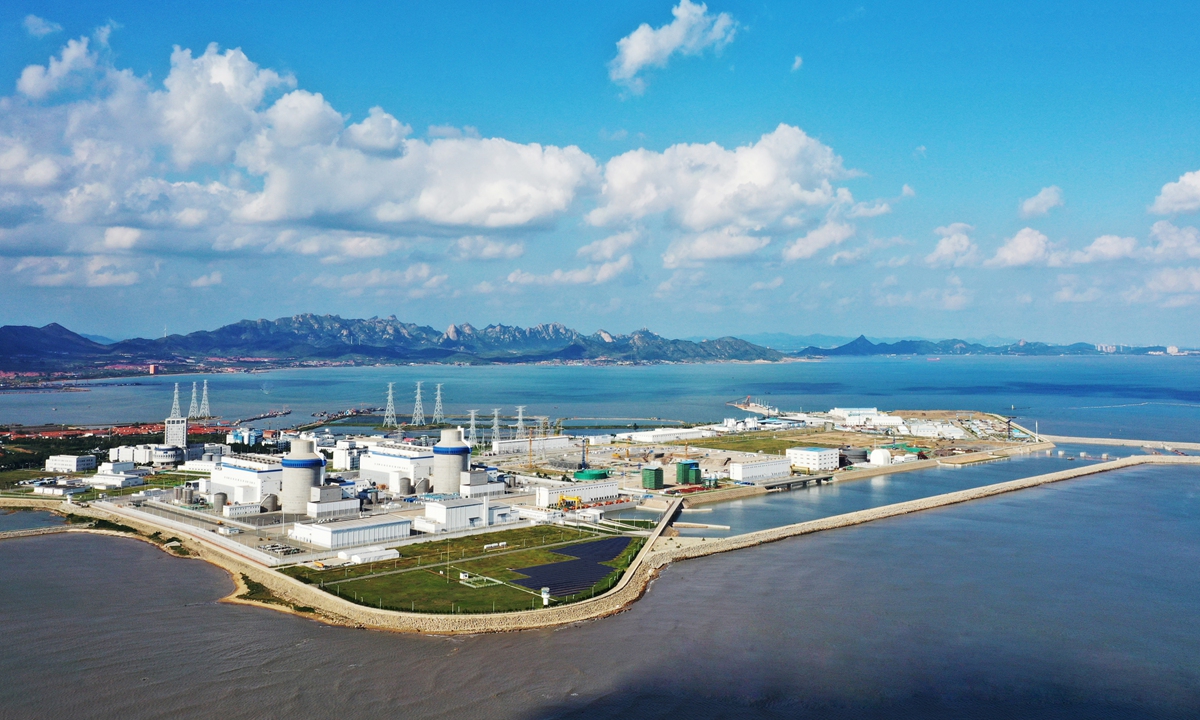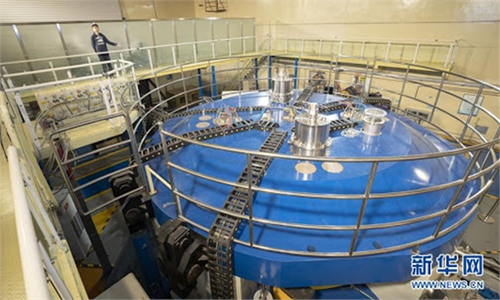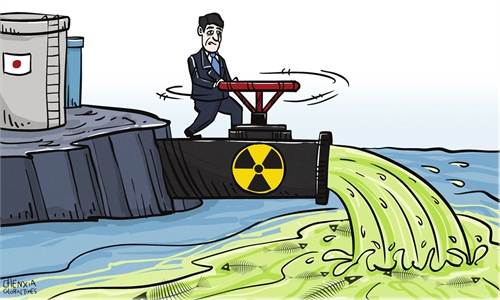
The Haiyang Nuclear Power Plant in East China's Shandong Province. Photo: Courtesy of Shandong Nuclear Power Company
Facing serious concerns and a strong backlash from Japanese society, neighboring countries and the international community, Japan remains headstrong in carrying out its plan to dump nuclear-contaminated wastewater from the Fukushima nuclear power plant into the Pacific Ocean, a move that has ignited public discussions and worries about the safety of nuclear power plant construction and operations, among others.
What about the safety data from China's nuclear power plant operations? How can China further enhance the development of nuclear power with high efficiency and high quality in the future?
Lu Tiezhong, a member of the 14th National Committee of the Chinese People's Political Consultative Conference (CPPCC), told the Global Times in an exclusive interview that China's nuclear power units have a world-leading safety record, and developing nuclear power is an inevitable choice for ensuring China's sustainable social and economic development, meeting people's need for better lives and realizing the country's "dual carbon" goal.
China has announced that it will peak carbon dioxide emissions before 2030 and achieve carbon neutrality before 2060, which is known as the "dual carbon" goal.
In the future, China should promote in an orderly way the construction of nuclear power projects in its inland provinces, where the demand for power is great and the ability to secure power supply is relatively weak, said Lu, who is the assistant to the general manager of the China National Nuclear Corporation (CNNC) and also the Party chief and chairman of the China National Nuclear Power Company.
The World Association of Nuclear Operators (WANO) Composite Index for CNNC shows that it leads the world in the number of nuclear power units in operation for three consecutive years.
WANO indicators are a common system for the global nuclear power industry, composed of 14 individual indicators and a composite index. They evaluate nuclear power plants' comprehensive performance in terms of nuclear safety, power generation management, power plant equipment reliability, and industrial safety in a quantitative manner.
"As a safe and efficient energy source, nuclear power operates stably and reliably with a long refueling cycle, which is suitable for bearing the base load of the power grid and necessary power load tracking, and can replace fossil energy as the base load power source on a large scale," Lu said.
The political advisor believes that increasing the proportion of nuclear power in the energy sector will help ensure the safety of the power grid system. In addition, nuclear energy also has great potential in clean heating, industrial steam supply, seawater desalination, isotope production and other fields.
According to Lu, 1 kilogram of uranium 235 fission releases about as much energy as 2,700 tons of standard coal and 1,700 tons of crude oil. A one-megawatt nuclear power plant would require only 30 tons of refueling a year, compared with about 3 million tons for a coal-fired unit of the same size.
Hualong One, a domestically designed third-generation nuclear reactor, is one such example. With an installed capacity of 1.16 million kilowatts, Hualong One generates nearly 10 billion kilowatts of clean electricity every year, which is able to meet the annual electricity needs of 1 million people in medium-sized developed countries. At the same time, it is equivalent to reducing standard coal consumption by 3.12 million tons, reducing carbon dioxide emissions by 8.16 million tons, and afforestation by 70 million trees.
Lu noted that the currently 76 nuclear power units are under construction in the Chinese mainland, with an installed capacity of 81 million kilowatts, ranking second in the world. Cumulative nuclear power generation has exceeded 3 trillion kilowatt-hours and the emission reduction of carbon dioxide is about 2.5 billion tons. China also tops the global nuclear power unit Composite Index published by WANO.
By 2035, installed nuclear power capacity in the Chinese mainland is expected to exceed 200 million kilowatts, accounting for between 10 percent and 15 percent of the country's electricity generation.
"The proposed 'dual carbon' goal represents a major new opportunity for the development of nuclear power, and is also a historical responsibility to speed up the development of clean energy and serve the country's overall strategic situation. We will actively expand the multi-purpose use of nuclear energy and hope to play a bigger role in carbon reduction," Lu said.
Lu said China should promote the comprehensive use of nuclear energy. In line with market demand, China should actively promote the application of large pressurized water reactors, small modular reactors and high temperature gas-cooled reactors in urban heating, industrial steam supply, hydrogen production and seawater desalination, promoting the clean and low-carbon transformation of the whole of society.
Furthermore, the country should also intensify efforts in uranium resources exploration at home and abroad, he said.




